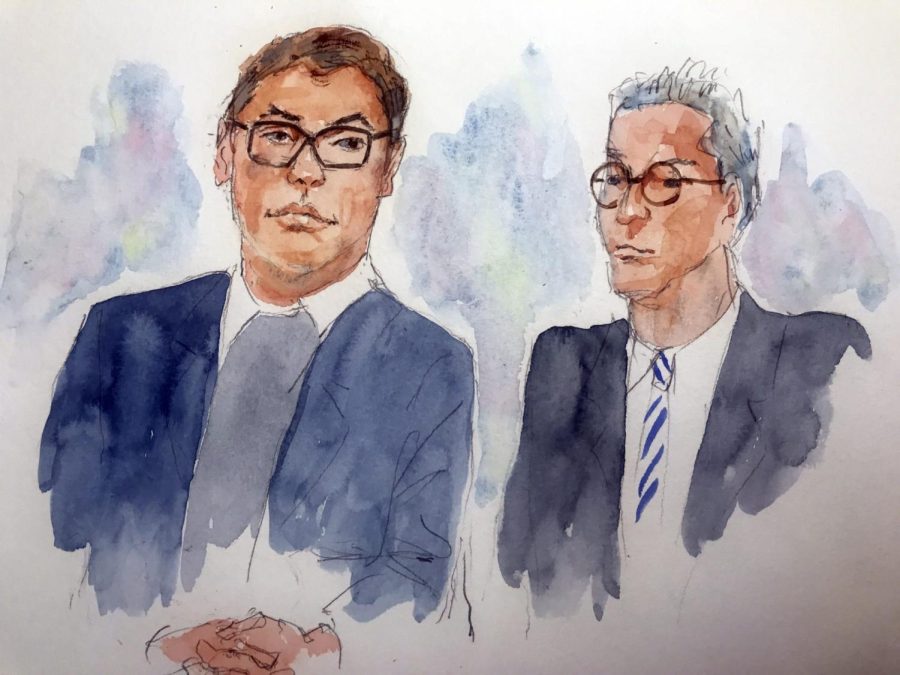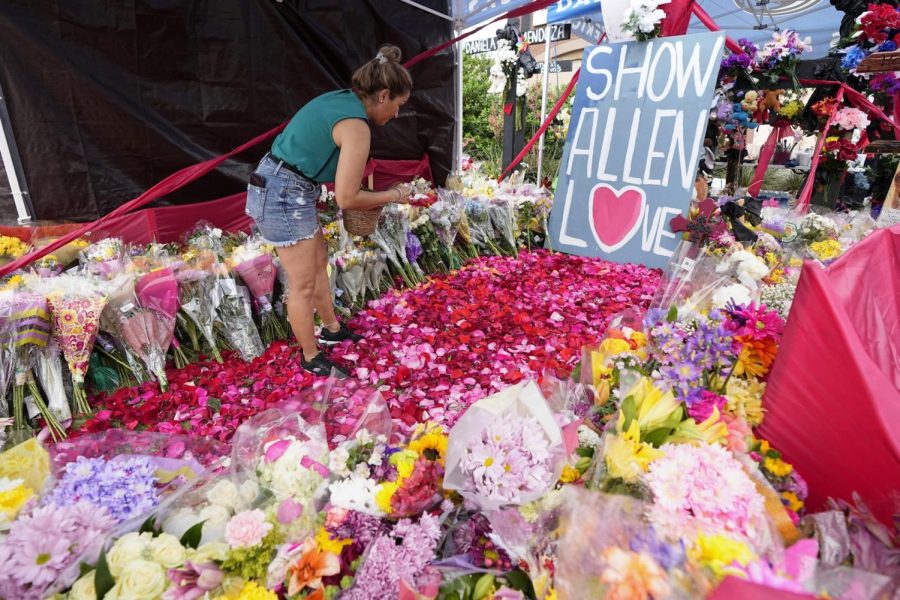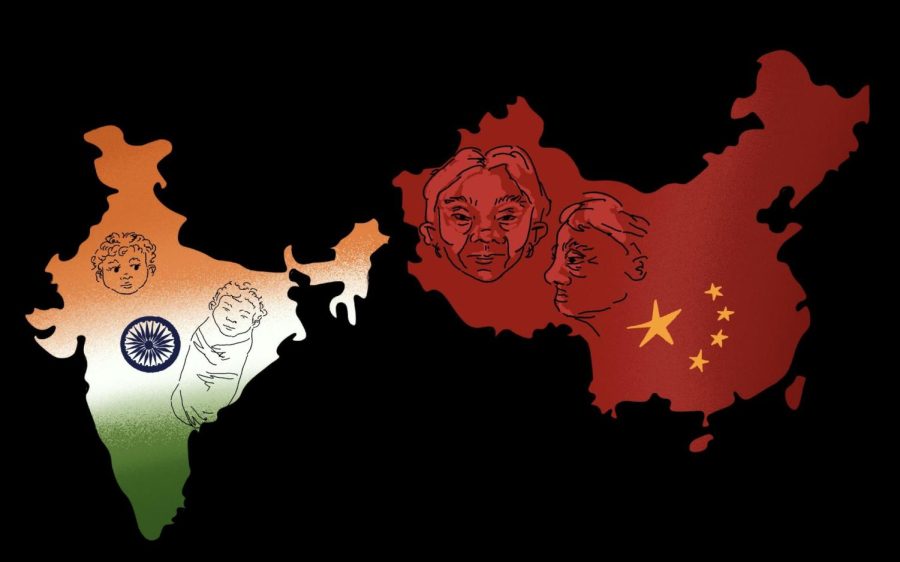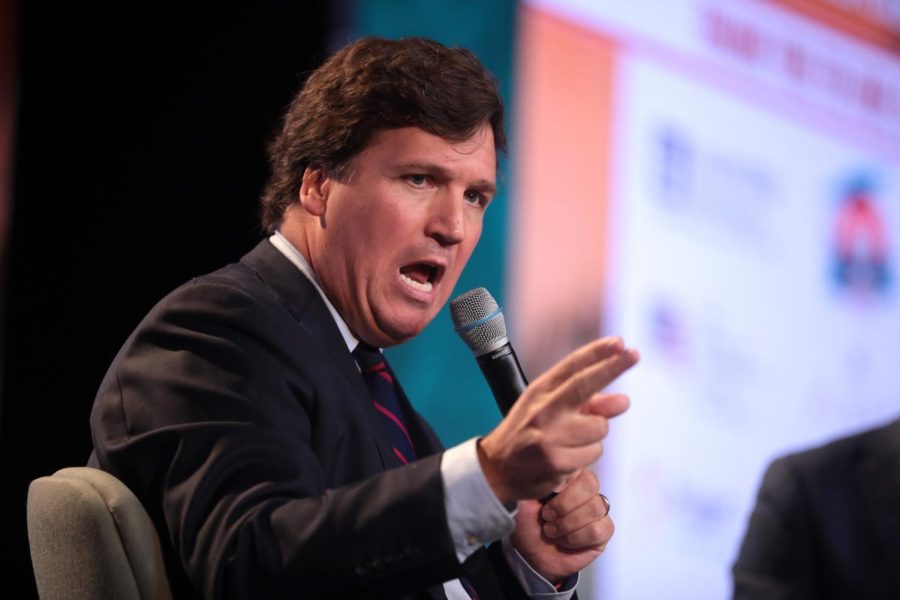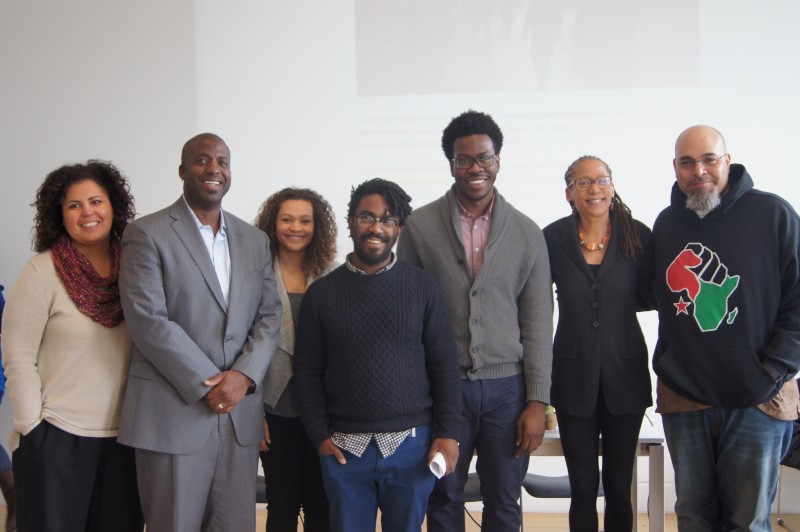
Prince was revived one last time through the purple opening slide of Sarah Jackson’s talk at the citizen journalism, new media and activism colloquium at the DePaul Art Museum last Friday. A quote from the opening of Prince’s famous “Let’s Go Crazy” also found its way into the PowerPoint, connecting the music icon’s word to the need to organize and to survive.
The power of communal liberation and clear and direct communication rang through Friday’s colloquium, hosted by DePaul’s Center for African and Black Diaspora Studies program. Prominent African-American scholars, activists and journalists gave a series of talks to a buzzing gallery of students and peers. Presented in three groups, which felt like three acts in a play trying to resolve itself much to the thrill of the audience, the talks focused on a range of subjects from Twitter to pedagogy to newsrooms lacking people of color.
As the lights faded and Prince made his presence known in the room, the first “act” began. The audience may have called it, “1984 in 2016,” as its exposition recalled technology gone rogue and called for activists to consciously reclaim it. Jackson’s talk explored the development and evolution of the “black public sphere,”a set of physical and mediated spaces where people of color can exchange information and mobilize against constant oppression. Jackson, an assistant professor in the Communication Studies department at Northeastern University, described this notion as “a form of agitation to the mainstream” and wondered amid a recent absence of spaces by and for black people,“is the black public sphere dying?”
Those on the panel aimed to talk about these issues and others extensively. The panel also featured Adeshina Emmanuel of the Chicago Reporter, Darryl Holliday of DNAinfo and City Bureau and moderated by Laura Washington of the Chicago Sun-Times. The trio was blunt. They were honest and they were critical
The answer is not so simple they said, but it is also not grim. Jackson and her colleagues, Charlton McIlwain, an associate professor of Media, Culture, and Communication at New York University, and Safiya Umoja Noble, assistant professor in the department of Informational Studies at UCLA, isolated events such as the #myNYPD tTwitter hack, where people took over the hashtag to highlight racialized police brutality in both “comedy and rage,” as well as larger Twitter trends, such as the outcry and domino effect on social media following the murder of Michael Brown.
“Protesters were able to circulate their own narratives without relying on mainstream news outlets,” McIlwain said, as Jackson nodded in accordance from the panel table. Twitter, which claimed to be a social network, he said, was seeing narratives turn into reporting, crossing the fine line into news networking.
McIlwain worries citizen journalism struggles to carry on conversations outside of instances. “High volume activity on Twitter and other social networks is dependent on there being an incident, usually violent,” McIlwain said. “How can we carry on the conversations at that high volume when there isn’t an incident?”
Most social media users, even outside of Twitter, will flock to wherever they are pushed by marketing companies. “We forget the internet was a military project at its origin,” Noble said. It was invented to surveil, which has resulted in companies “mining” social networks for marketing.
Research shows that the majority of Americans are not very concerned with programs that monitor their social media activity. Though 87 percent of adults have heard of government and marketing surveillance programs, only 17 percent have changed their privacy settings on social media, according to the Pew Research Center.
Noble highlighted these issues with surveillance as it relates to activism and the portrayal of black deaths on mainstream media. According to the Free Press, people of color in the U.S hold only 7 percent of radio and 3 percent of television licenses. As a result, consumers are steered through “a lens of whiteness,” Noble said, which is driven by “news ratings, metrics and traffic at the expense of national conversation. Consumers are being held hostage.”
“When images of black bodies are circulated, it’s a meaningful site for capital,” Noble said. “This can have profound effects on the wellness of black communities.”
Anish Ramanathan is pursuing an applied math master’s degree at DePaul and works in the Egan Office for Urban Education and Community Partnerships. Through the Egan Office, Ramathan and his peers, Abby White, Lizzet Proa and Marcus Rivers, tutor elementary school students across Chicago in restorative justice and computer literacy. Through the colloquium, Ramathan’s eyes have been opened to media injustices.
“Social media is generally a good thing to make connections and share news, but to sell consumer information and use it to market murder is dehumanizing to victims,” he said.
When pedagogy, activism and technology intersect, the benefits are endless. ”Act two,” “Teaching the Tools of Revolution,” focused on this. Following the death of Michael Brown, the Ferguson school district delayed the start of classes. Many educators and scholars were devastated, and many more wondered how to bring this national tragedy into the classroom to teach race relations. Recalling the #FergusonSyllabus, coined by Marcia Chatlain of Georgetown University, Duchess Harris investigated how to teach in the age of the Black Lives Matter movement.
Harris, who teaches at Macalester College, a small private liberal arts college in Minnesota, struggled to get her students engaged with the material and apply it to their lives.
“My students are young. They were 11 years old when Obama was elected. They were not around for the Reagan and Bush eras,” Harris said.
“These examples are too recent to be integrated critically into high school standardized curriculum and examined for their effect on race inequality in the U.S. today,” Harris continued.
Harris presented a thematic dichotomy at the center of the conflict that motivates activism and action.
On one hand, hope can be found throughout history.
In the Civil Rights Act, housing restriction reforms and desegregation, there is proof that activism works. On the other, despair in the face of systematic oppression, the restrictions of the Reagan and Bush administrations, and injustices in medical care, policing and politics can motivate activists to their cause.
“All my students have experienced hope and despair at some point in their lives,” Harris said, and by harnessing this, she has found her students more receptive to the material.
Motivation can only take students so far until they hit a wall when they feel like their voices can no longer be heard. Nichole Pinkard is an associate professor in the College of Computing and Digital Media (CDM) at DePaul. She also works with the Digital Youth Network, which uses pedagogy to give students the skills to take their voice to the next level.
“We need to develop socially-savvy and politically-active youth,” Pinkard said. Against a projected photograph of activist and artist Tupac Shakur and a quote from his work, “The Rose that Grew Out of the Concrete,” Pinkard said that in addition to traditional literacy, educators and students must cultivate visual, musical, computational and cinematic literacy.
To a student without these skills, she said, careers can feel limited, often to entertainment fields. “Opportunities look like a maze of concrete. It’s confusing, but if youth put in the work with the help of mentors, friends and peers, they can truly succeed,” Pinkard said. “We have to develop the spaces and places for kids to explore and gain skills.”
Once students have the skills to accelerate their activism, they can share their experiences. Jared Ball, an associate professor of Communication Studies at Morgan State University, hopes to revolutionize citizen journalism so youth can do just that.
He extends the philosophy of Steve Biko, an anti-apartheid activist in South Africa who later helped found the Black Consciousness Movement that would empower and mobilize a large portion of the urban black population. Echoing Biko’s “I Write What I Like,” Ball’s “iMiXWHATiLiKE!” radio program intends to “blend radical broadcasting, the mixtape and black consciousness with what Hemant Shah (UW-Madison) has called ‘Emancipatory Journalism.’”
Ball speaks passionately and hopes to decolonize media for a decolonized world from the bottom up. “(Emancipatory journalism) must be from the perspectives of the most oppressed communities,” and argues against objectivity in favor of studied perspectives. “Creeping neoliberalism is parading as radicalism,” Ball said, emphasizing the need for diverse voices in the newsroom and empowering young people to use journalism powerfully. Where traditional journalism fails, he said, is it describes events factually and scientifically, rather than focusing on process, people, interpretation and ground knowledge.
In “act one,” our exposition arose: social media is powerful for activism, but is dangerous in perpetuating mainstream capital content. In “act two,’ the conflict and planning: teach our kids the history, give them tools for the future and let their voices soar. “Act three,” called “Journalism of Color,” focused on this. In this final installment of the colloquium, the speakers and those present approach resolution.
All three faced difficulty with getting audiences to trust and legitimize them, all recalling the problems with being a black reporter covering black issues. They advocated for on-the-ground journalism, and strongly cautioned against what they called “parachute journalism,” where outside reporters come in for a shooting or a tragedy and fly back out without immersing themselves in the community. Often, Washington said, these pieces are not expanded, or created specifically to get views.
“Talking about race in this country shouldn’t be radical,” Emmanuel said. “I believe in fairness, and I have opinions. I would like it to be a part of the mainstream news diet to read about race and class.”
Washington agreed, but said that being a journalist of color has become a bit easier. “When I push ‘racism is bad,’ I sometimes get push back from white colleagues,” Washington said. “But it makes a difference having black reporters telling the stories they know.”
“There are many benefits to being a reporter of color,” Emmanuel said. “As a black reporter, it cuts down on the amount of research you need to do because you’ve lived (the experience).”



